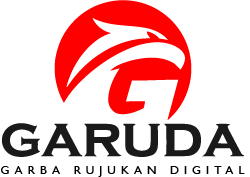METADISCOURSE MARKERS IN ENGLISH ESSAYS WRITTEN BY INDONESIAN STUDENTS IN EFL SETTING
DOI:
https://doi.org/10.22460/eltin.v10i2.p%25pKeywords:
metadiscourse, interactive, interactional, essaysAbstract
English essays commonly use metadiscourse markers to assist and direct readers in understanding the essays. This study aims at identifying and explaining interactive and interactional metadiscourse markers used by male and female students and their roles in the essays. There are 10 essays written by English Department students of second semester at the University of Trunojoyo Madura. The essays were written by male and female students with one of the assigned topics about diet for female and music for male students. This research was conducted as descriptive qualitative research methods, while to show the frequency of metadiscourse markers used by male and female students in the essays, simple quantification was done manually. Results show that both male and female use interactive metadiscourse markers in the essays that consist of transitions, frame markers, and code glosses, while interactional metadiscourse markers consist of hedges, boosters, attitude markers, self-mention, and engagement markers. Male students tend to use metadiscourse markers lower than female students but they use similar pattern of the markers. Only for self-mention items that is used higher by male students. The uses of metadiscourse markers have a significant role in organizing and producing of written essays to achieve certain communicative purposes.References
Adel, A. (2006). Metadiscourse in L1 and L2 English (Vol. 24). John Benjamin Publishing Company.
Alotaibi, H. S. (2018). Metadiscourse in dissertation acknowledgments: Exploration of gender differences in EFL texts. Educational Sciences: Theory & Practice, 18(4).
Asadi, Ali. (2018). Enhancing Writing Skills of English Learners through Metadiscourse Resources. MEXTESOL Journal, 42, 3 (1).
Davoodi, Kobra. (2016). On the Use of Interpersonal Metadiscourse Markers in Conclusion Section of Language Testing Articles. Journal of Applied Linguistics and Language Research.3 (4), 211-216.
Firoozian, A., Khajavy, H., & Vahidnia, F.(2012). A contrastive study of metadiscourse elements in research articles written by Iranian applied linguistics and engineering writers in English. English Linguistics Research,1(1), 88–96. https://doi.org/10.5430/elr.v1n1p88
Fuertes-Olivera, P. A., Velasco-Sacristán, M., Arribas-Baño, A., & Samaniego-Fernández, E. (2001). Persuasion and advertising English: Metadiscourse in slogans and headlines. Journal of pragmatics, 33(8), 1291-1307.
Heng, C. S., & Tan, H. (2010). Extracting and comparing the intricacies of metadidcourse of two written persuasive corpora. International Journal of Education and Development Using Information and Communication Tecnology (IJEDICT), 6(3), 124-146. https://doi.org/10.1075/scl.24
Mohamed, A. F., & Rashid, R. A. (2017). The metadiscourse markers in good undergraduate writers’ essays corpus. International Journal of English Linguistics, 7(6), 213-220.
Hyland, K. (2005). Metadiscourse. London, UK: Continuum.
Intraprawat, P., & Steffensen, M. S. (1995). The use of metadiscourse in good and poor ESL essays.Journal of Second Language Writing, 4(3), 253-272. https://doi.org/10.1016/1060-3743(95)90012-8
Irvin, L. Lennie. (2010). What Is “Academic†Writing? inWriting Spaces: Readings on Writing, Volume 1. South California: Parlor Press.
Jalilifar, A., & Alipour, M. (2007). How explicit instruction makes a difference: Metadiscourse markers and EFL learners’ reading comprehension skill. Journal of College Reading and Learning, 38(1), 35-52.https://doi.org/10.1080/10790195.2007.10850203
Khedri, M., Ebrahimi, S.J., Heng, C.S. (2013). Interactional Metadiscourse Markers in Academic Research Article Result and Discussion Sections. 3L: The Southeast Asian Journal of English Language Studies – Vol 19 (1): 65 – 74
Musa, Almudgaffari, Hussin, Supyan., Ho, I. Abdullah. (2019). Interaction in Academic L2 writing: An analysis of Interactional MetadiscourseStrategies in Applied Linguistics Research Articles. 3L: The Southeast Asian Journal of English Language Studies, 25(3): 16 – 32 .http://doi.org/10.17576/3L-2019-2503-02
Nasiri, S. (2013). Exploring the significant role of meta-discourse in academic writing for a discourse community by academic members. International Journal of Research Studies in Education, 2(1), 67-74.
Pasaribu, T. A. (2017). Male and female students’ use of textual discourse markers in writing academic essays. Journal of Language and Literature, 17(1).
Patton, M. Q. (1990). Qualitative evaluation and research methods. SAGE Publications, inc.
Rustipa, K. (2014). Metadiscourse in Indonesian EFL learners' persuasive texts: A case study at English Department, UNISBANK. International Journal of English Linguistics, 4(1), 44.









